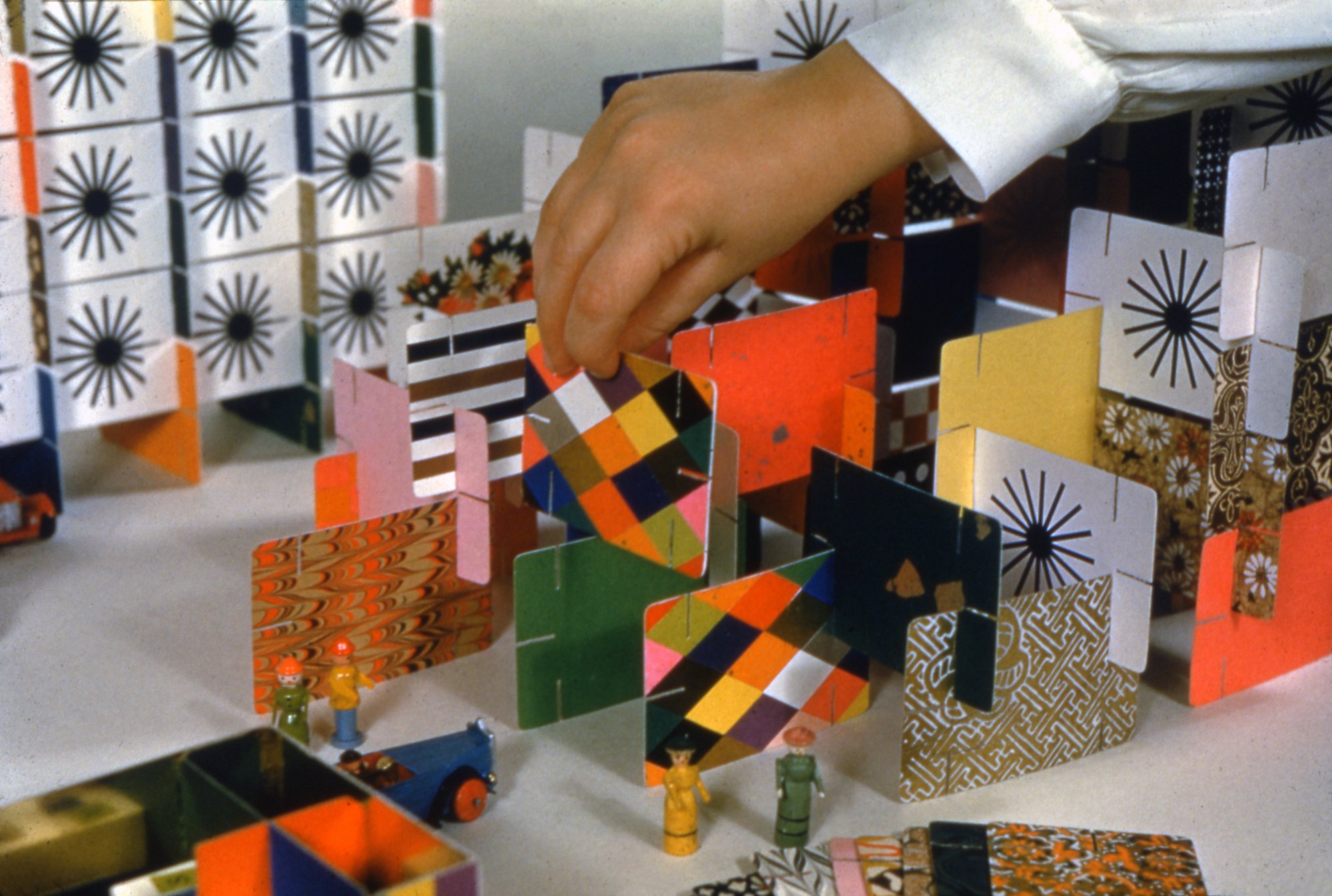
Eames at Play
For Ray and Charles Eames toys and games were serious business. Playing wasn’t just about having fun, but offered a means of approaching life through a new lens.
The Eameses designed the original House of Cards for Tigrett Enterprises in 1952. Image © Eames Office, LLC.
Faced with a selective cross section of Ray and Charles Eames’s works one might justifiably mistake them for toy designers.
Scattered amidst their iconic furniture and architectural creations are designs for plywood animals, masks, building toys, coloring toys, solar-powered toys, model houses, houses of cards, and even an operational miniature railroad (not to mention the numerous films concerning toys). In 1961 Charles famously said, “Toys are really not as innocent as they look. Toys and games are the preludes to serious ideas.” But what exactly did this mean for the enterprising design duo?
In toys of the classic variety that the Eameses collected and featured in their films, Ray and Charles saw designs that were free from embarrassment and self-consciousness on the part of the maker. These toys set out to be exactly what they purported to be: a kite must fly, a top must spin, a ball must bounce. They also were fully imbued with spirit—a promise of joy or satisfaction for the person who would use it. Universality, purposefulness, demonstrable problem-solving, and delightfulness were certainly among the “serious ideas” that the Eameses sought to incorporate in all their designs.
Toys are really not as innocent as they look. Toys and games are the preludes to serious ideas.
Charles Eames
Think, 1961
For the Eameses, play was a concept that could be understood in a multitude of contexts from the aforementioned toys, to the design process, to the entire field of science (which Charles likened to “a set of interlocking puzzles”). To the Eameses, play meant undertaking an activity simply for the value of the activity itself. It meant following interests and information without a sense of immediate payoff, but instead developing connections and seeing where they might lead. It meant engaging in a process of trial and error and letting the learning unfold from the doing. While there are many Eames designs that could rightfully be described as “playful,” in this more expansive sense, play serves more as a strategy for the designer to deploy in service of attacking problems elliptically.
Within the Eames Collection are countless examples of Ray and Charles at play, but perhaps none that announces its presence more than the Musical Tower. Originally created for the lobbies of the Time & Life Building that were designed at the behest of publisher Henry Luce, the tower was conceived as a vehicle for bringing something from nature—gravity—to the upper-floor interiors of a New York City skyscraper. Although the gravity-fed, deconstructed xylophone apparently wore out its welcome only after a few weeks in its original location, two remaining towers became beloved fixtures at the Eames Office at 901 Washington in Venice, California. This replica, with its original tune by longtime Eames collaborator Elmer Bernstein, was recreated for the World of Charles and Ray Eames exhibition at the Barbican museum in 2015. ❤
Crew
Director & Producer: Nicolas Jara
Creative Director: Elaine Fong
Director of Photography: Chris Tipton-King
1st Assistant Camera & Focus Puller: Morgan Clarke
Gaffer: Andrew Eckmann
Key Grip: Christopher Ruedy, Tyler Ducheneaux
Grip: Colter Macshane
Swing: Colin McDonald
Production Assistant: Nathaniel Wil Clarke
Editor: Nicolas Jara
Sound: Nicolas Jara
Opening Score: Oxygen by Swirling Ship
Coloring by Roast n’ Post
Post-Producer: Crystal Villamayor
Colorist: Sean Wells
Finishing Artist: Jared Tan
Starring
Llisa Demetrios as herself
Special Thanks
Sam Grawe, Adam Esposito, Emily Gu, Bejamin Godfrey
Musical Tower song composed by Elmer Bernstein
Courtesy of Elmer Bernstein Enterprises, Inc.